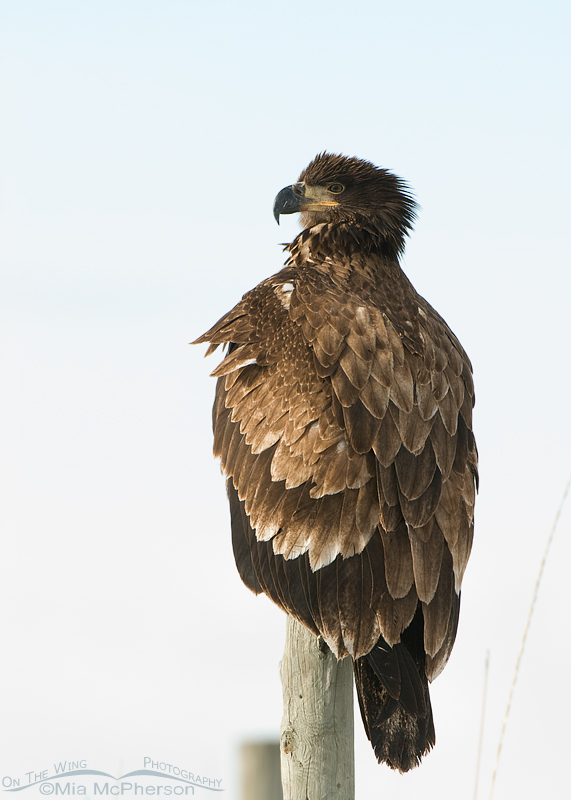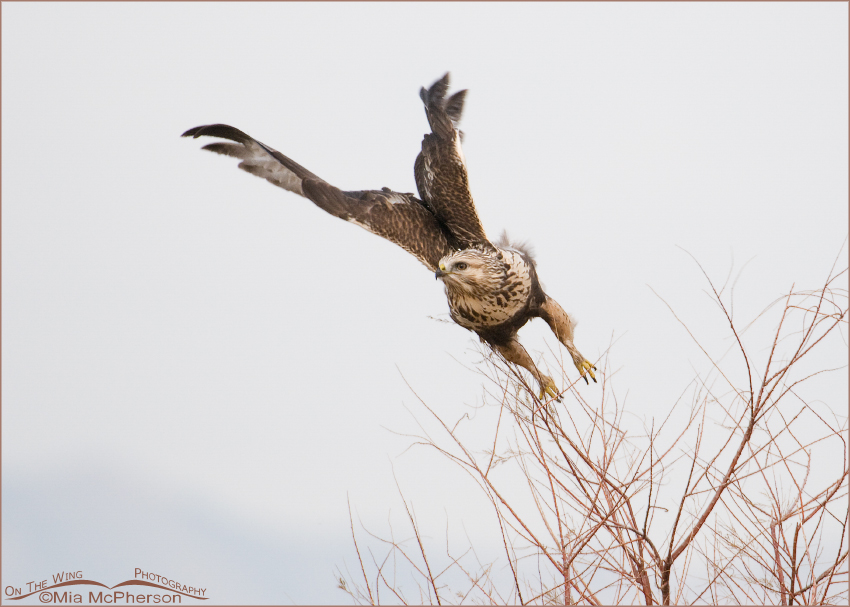It seems that people either love high key images or they hate them. Personally; I believe that when a high key image is done well that they can be very appealing and have a place in my portfolio. Yesterday I went out on low light with falling snow to photograph birds on a pond near where I live and came back with a few high key images I really like, one of which I have posted below.
 High key Mallard (Anas platyrhynchos) on snow – Nikon D300, f6.3, 1/640, ISO 1000, +0.3 EV, Nikkor 200-400mm VR with 1.4x TC at 300mm, natural light
High key Mallard (Anas platyrhynchos) on snow – Nikon D300, f6.3, 1/640, ISO 1000, +0.3 EV, Nikkor 200-400mm VR with 1.4x TC at 300mm, natural light
This Mallard had just come out of the water and was walking on snow-covered ice so in this case the foreground and background are entirely snowy white and by using exposure compensation of +0.3 I was able to expose the Mallard so that it would not need to be lightened in post processing introducing unwanted or unnecessary noise plus it showed nice details in her plumage. There is sufficient detail by the duck’s feet to show that it was walking on snow.
 High key first year Bald Eagle – Nikon D200, f6.3, 1/250, ISO 320, +0.3 EV, Nikkor 200-400mm VR with 1.4x TC at 300mm, natural light, not baited
High key first year Bald Eagle – Nikon D200, f6.3, 1/250, ISO 320, +0.3 EV, Nikkor 200-400mm VR with 1.4x TC at 300mm, natural light, not baited
High key images do not always have white backgrounds, at times they are very light colors or a combination of colors like in this image of a first year Bald Eagle, the upper portion is sky and the lighter area below is snow on the ground. Because of the light and the exposure compensation I used I was able to retain the bird’s color and fine details in the plumage.
 High Key Rough-legged Hawk lift off – Nikon D300, f5.6, 1/1600, ISO 800, +1.0 EV, Nikkor 200-400mm VR with 1.4x TC at 335mm, natural light, not baited
High Key Rough-legged Hawk lift off – Nikon D300, f5.6, 1/1600, ISO 800, +1.0 EV, Nikkor 200-400mm VR with 1.4x TC at 335mm, natural light, not baited
Gray or milky skies often lend themselves to the creation of high key images, when I photographed the Rough-legged Hawk above the skies were grey but in the distant background the out of focus mountains are still visible.
Personally I like all three images and will continue to look for the opportunity to create more high key images. They are different than my “normal” images but creating them also tests and increases my photographic skills and I enjoy that.
Life is good.
Mia
Click here to see more of my bird photos.


You take wonderful photos Mia. I hope one day my photos may be almost as good as yours
Hello Prairiebirder and welcome to my blog! Thank you very much for your kind comments on these images.
I’m certain that you will one day take the images you desire and you have a lot of birds to practice on in your area!
I don’t believe my Egret photo is high key. I went the opposite way and exposed it at 1/1600 @ f10, MINUS -0.3. I do understand what you did, though, and I may work on that. I always like new challenges and/or new methods.
Bob,
I am looking forward to seeing some high key images on your blog. I wouldn’t exactly call your Egret high key but it is very close to being one!
A very beautiful effect, Mia. Like Dan, above, I might experiment with that. I wonder if my Egret in today’s post might be qualified as high key. If so, it would be very accidental.
Fanastic images Mia. I just learned what high key is. Just starting to play with the slr part of my camera, hoping to get better images in poor lighting situations.
Dan,
Thank you. I’m sure you will get some lovely high key images, sometimes it is about working with the light you have, not fighting it.